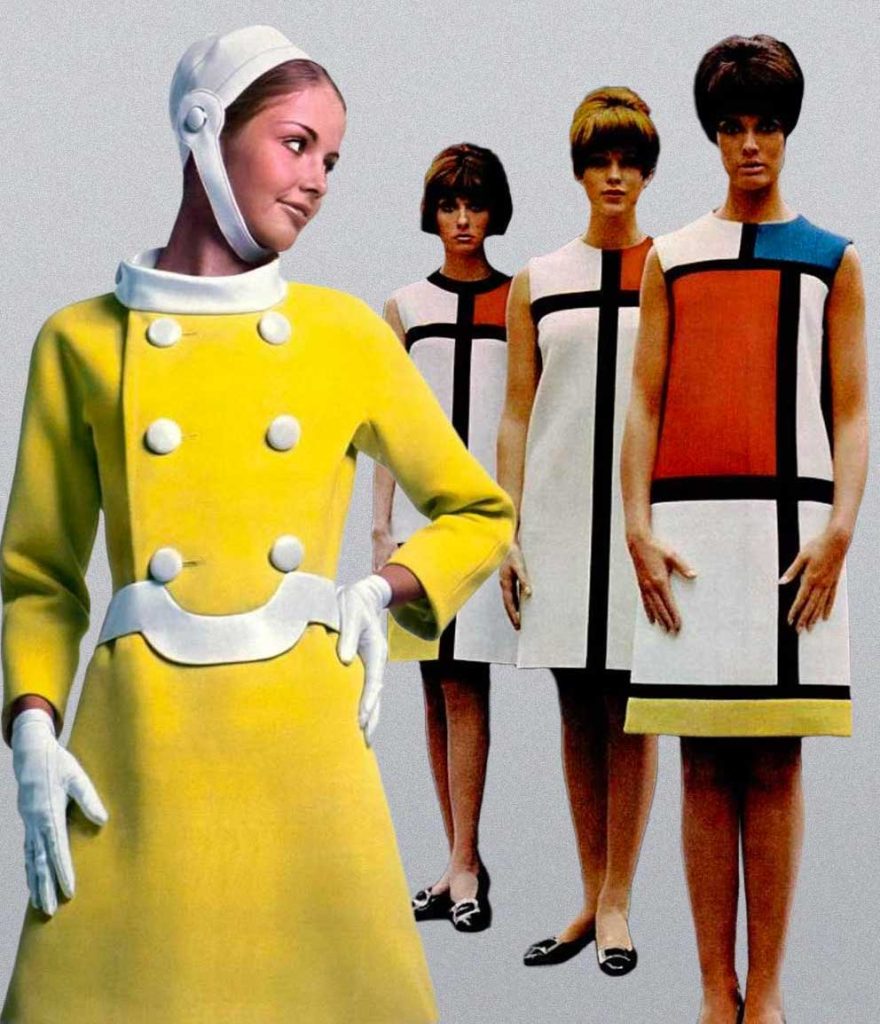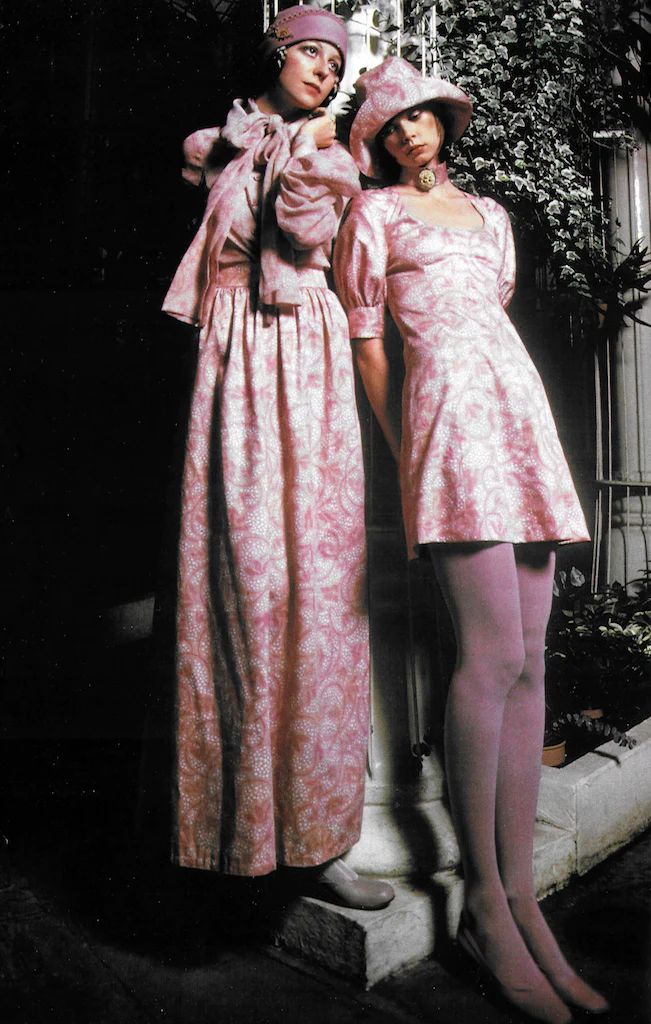Exploring Vintage Dress Sewing Patterns
Vintage dress sewing patterns open the door to an era of iconic fashion styles. They embody the elegance of the 1940s, the vibrant silhouettes of the 1950s, and the sleek lines of the 1960s. These patterns are often available for free online, allowing us to experiment with bygone aesthetics without additional cost.
Free designs cater to various preferences. For a 1940s-inspired look, patterns often include wrap dresses featuring flattering necklines and practical closures. The 1950s aesthetic thrives in options for full-gathered skirts or sleek, straight skirts. For the minimalistic charm of the 1960s, shift dress patterns focus on clean lines and simple construction. Each design reflects the distinct style of its era while remaining accessible.
Many options simplify traditional techniques. Authentic patterns might expect advanced skills, but modern interpretations let us bypass intricate methods, focusing instead on ease and creativity. By choosing suitable fabrics, such as vintage-inspired prints, we enhance the historical accuracy of these looks.
In exploring these patterns, we enjoy the flexibility of crafting garments customised to fit our exact measurements. This approach revives classic designs with a tailored finish, creating timeless pieces from household sewing machines.
Popular Styles Across Decades
Vintage sewing patterns offer a glimpse into the evolving aesthetics of different eras. Let’s explore standout styles, from the glamour of the 1920s to the playful charm of the 1970s.
1920s To 1940s Designs
The 1920s embraced flapper dresses with dropped waists, loose silhouettes, and embellishments like beads and fringe. Patterns often included pleats or intricate embroidery, making them perfect for evening wear. Moving into the 1930s, bias-cut dresses with flowing fabrics highlighted feminine curves, while daytime patterns featured fitted bodices and modest hemlines. In the 1940s, wartime practicality inspired patterns for wrap dresses and shirtwaist styles with structured shoulders, A-line skirts, and utilitarian pockets.
1950s To 1970s Trends
The 1950s brought full-skirted dresses paired with fitted bodices, often seen in patterns for petticoats or circle skirts. Tea-length designs with sweetheart necklines were staples for formal occasions. Swinging into the 1960s, mod-inspired shift dresses defined simplicity with clean lines, bold colours, and geometric prints. The 1970s celebrated bohemian flair, offering patterns like maxi dresses with flowing silhouettes, bell sleeves, and earthy tones or floral prints.
Iconic Details To Look For
Recognisable elements distinguish vintage patterns. Look for decorative features like Peter Pan collars, puffed sleeves, or ruching in early decades. Full skirts, nipped-in waists, and corset-like structure dominate 1950s designs. By the 1960s and 1970s, details like bold prints, contrasting trims, and asymmetric elements become prominent. Fabrics such as silk for elegance or cotton for everyday wear further define the authenticity of each era.
Where To Find Free Vintage Dress Patterns
Free vintage dress patterns can be found across numerous platforms, catering to sewists of all skill levels. By exploring the right sources, we can access designs from various decades at no cost.
Online Resources for Free Downloads
Many websites offer free vintage dress patterns as downloadable files. These platforms allow us to browse and select styles from specific eras, such as the 1940s wrap dresses, 1950s gathered skirts or 1960s shift dresses. Sites like sewing-focused repositories often categorise patterns by garment type, making it easier to identify options like dresses, skirts or blouses. We can preview designs before downloading, ensuring the pattern matches our preferences. With digital access, it’s convenient to print the pattern templates to start the sewing process quickly.
Community and Archive Websites
Community forums and vintage archive websites host free dress patterns contributed by sewing enthusiasts and historians. These collections often include rare or hard-to-find designs, preserving the creativity of past decades. Members of sewing groups may share patterns alongside advice for tackling complex details like pleats or darts. Similarly, several libraries and historical archives digitise vintage sewing books, enabling us to recreate authentic period garments. Exploring these resources provides valuable insights into the history of vintage fashion while expanding our sewing repertoire.
Tips For Sewing Vintage Dresses
Sewing vintage dresses involves blending traditional aesthetics with modern techniques. Paying attention to fabric and fit ensures a stunning yet functional final piece.
Choosing the Right Fabric
Fabric selection significantly impacts the authenticity of a vintage-inspired dress. For designs from the 1920s, lightweight fabrics like chiffon or satin work well, reflecting the era’s fluid silhouettes. Cotton or rayon suits 1940s styles, such as wrap dresses or shirtwaist dresses, enhancing their structured appearance. For 1950s patterns, consider taffeta or gingham to match the fullness of gathered or circle skirts. Fabrics with small floral prints, polka dots, or stripes enhance a vintage look across styles.
Synthetic blends or overly stretchy fabrics might diminish authenticity, so it’s preferable to prioritise materials resembling those used historically. If the goal is practical wearability, incorporating subtle modern materials with vintage-inspired prints can offer an effective compromise.
Adjusting Patterns For Modern Fit
Vintage patterns often require adjustment due to the differences in historical standard sizing and contemporary body shapes. Measure your bust, waist, and hips carefully, comparing them to the pattern’s size chart. Many older patterns assumed the use of foundation garments, like corsets or girdles, which creates a dramatic waist-to-hip ratio. Adding extra width to the waist or reducing bust size is common when adapting designs.
Elongating bodices or skirts ensures better proportion for taller individuals, while shortening hemlines can modernise older styles if desired. Use toile fabric or muslin to create a test garment. This mock-up allows for fitting adjustments without risking the original fabric. Prioritising comfort while retaining the design’s charm is the key to an enjoyable sewing experience.
Key Takeaways
- Vintage dress sewing patterns offer a unique way to recreate iconic styles from the 1920s to the 1970s, often available for free online.
- Popular designs include 1940s wrap dresses, 1950s full skirts, 1960s shift dresses, and 1970s bohemian maxi dresses, reflecting the distinct aesthetics of each era.
- Free patterns can be found on sewing websites, community forums, or historical archives, with options ranging from basic to intricate designs.
- Fabric choice is crucial for authenticity – opt for era-appropriate materials like chiffon, cotton, or taffeta, avoiding overly stretchy blends.
- Adjusting vintage patterns for modern sizing ensures a perfect fit, with toiles or mock-ups helping refine proportions before sewing the final piece.
- Blending original designs with modern sewing techniques allows for stylish, custom-fit vintage-inspired clothing.
Conclusion
Exploring free vintage sewing patterns opens up a world of creativity and nostalgia. It’s a chance to craft unique garments that blend timeless charm with a personal touch. By experimenting with styles from different eras and customising them to fit, we can create pieces that truly stand out.
With the right fabrics and a bit of patience, sewing vintage dresses becomes an enjoyable journey into the past. Let’s embrace the artistry of handmade fashion and keep the elegance of vintage style alive in our wardrobes.
Frequently Asked Questions
What are vintage sewing patterns?
Vintage sewing patterns are design templates from past decades that help create clothing with a retro-inspired aesthetic. They often represent popular styles from specific eras, such as the 1920s flapper dresses or 1950s full skirts, allowing for timeless, handmade fashion creations.
Where can I find free vintage sewing patterns?
Free vintage sewing patterns can often be found online through sewing blogs, vintage fashion websites, and craft communities. Platforms like Pinterest and sewing forums are also great resources for discovering a wide range of classic designs at no cost.
Are vintage sewing patterns difficult to use?
While vintage sewing patterns may appear challenging, many modern versions simplify traditional techniques. Beginners can start with easier designs, using updated instructions to create authentic looks without mastering complex sewing skills from the past.
What fabrics are best for vintage-inspired garments?
For historical accuracy, use fabrics like cotton or rayon for 1940s styles, chiffon for 1920s looks, and avoid synthetic blends. Vintage-inspired prints can enhance the design, balancing authenticity with modern practicality and wearability.
Can vintage sewing patterns be customised for modern body shapes?
Yes, vintage sewing patterns can be adjusted to fit contemporary body shapes. Take accurate measurements, create mock-ups using toile fabric, and make necessary alterations for a comfortable yet authentic finish.
Which vintage fashion eras are covered by these patterns?
Vintage patterns commonly span styles from the 1920s through the 1970s, featuring designs like 1920s flapper dresses, 1940s wrap dresses, 1950s full skirts, and 1960s shift dresses, reflecting the charm and aesthetics of each decade.
Are vintage sewing patterns cost-effective?
Yes, vintage sewing patterns are an affordable way to create timeless garments. Many are available for free, and by sewing at home, you save money while adding a personal, handcrafted touch to your wardrobe.
Do I need special skills to sew vintage fashion?
Not necessarily! Many patterns have modernised instructions, allowing you to achieve stunning results with basic sewing skills. Practice and creativity can help even beginners produce beautiful vintage-style garments.
Why use toile fabric for vintage sewing?
Toile fabric is essential for mock-ups, as it allows you to test the fit and make adjustments without risking damage to your final fabric. This ensures a perfect finish that suits your measurements.
How do I make a vintage outfit authentic?
Choose fabric inspired by the era, use era-specific styles, and customise the pattern for a tailored fit. Small details like hemlines, button choices, and stitching techniques can also enhance the authenticity of your garment.


